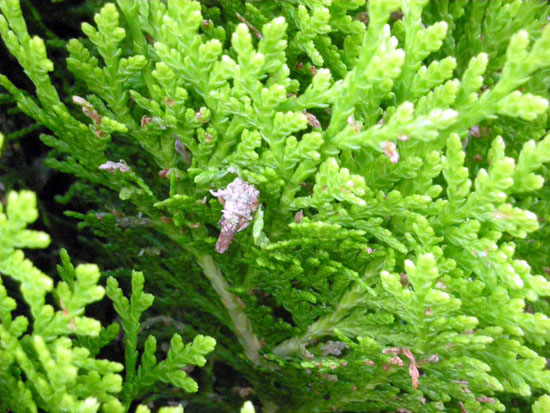Issue 10, June 27, 2016
Bagworm
Bagworms have hatched throughout the state and have been ballooning from tree to tree. They have now settled in southern Illinois and can be effectively controlled with one spray application. They will be controlled best towards the end of the first week of July in central Illinois and about a week later in northern Illinois.
Early bagworm feeding damage appears as scarifying of the needle or leaf epidermis with the internal mesophyll tissue eaten. Damaged foliage is lighter green at first and then whitish to brownish as the exposed and damaged cells die. As the bagworms get older and bigger, they eat entire leaves. Although bagworms feed on many tree and shrub species, they prefer Eastern red cedar, other junipers, arborvitae, and spruce. They also feed on crabapple, oak, maple, and other deciduous hosts.
Bagworms start forming bags soon after hatching. Each larva spins a silk tent around itself and covers the outside of the silk with bits of foliage. These green foliage bits soon turn brown. Very young larval tents look like one-eighth-inch long, conical, brown hats. As the larvae grow, the individual tents become more elongate and bag-like. At this time, the bags are about one-quarter inch long in southern Illinois, while most of those in northern Illinois are still hat-like. Fully-grown bagworm caterpillars have bags that are one to one-and-one-half inch long.

Young bagworm on arborvitae.
Scout for early scarifying damage at the top of susceptible hosts. Bacillus thuringiensis kurstaki (Dipel, Thuricide, others) and spinosad (Conserve) are effective and selective, causing less damage to pollinators and other non-pest insects. They are also organic. Other effective insecticides include cyfluthrin (Tempo), permethrin (Astro), acetamiprid (TriStar), indoxicarb (Provaunt), and chlorantroniliprole (Acelepryn). (Phil Nixon)
Author:
Phil Nixon